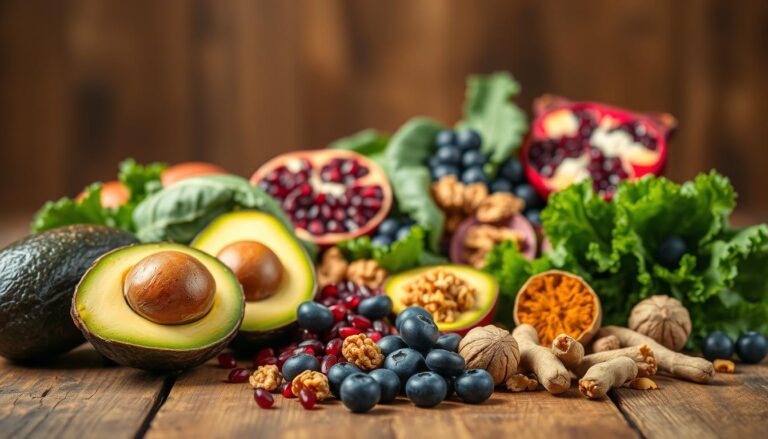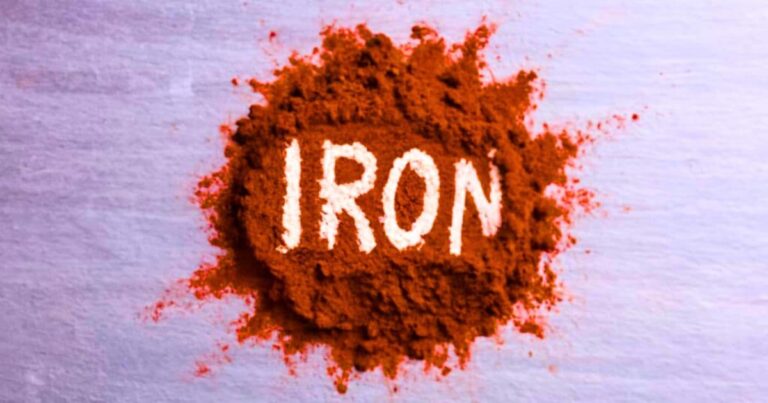Did you know that 60% of American adults rely on ultra processed foods for their daily meals? While convenient these choices can have serious consequences for your health.
Chronic diseases like heart disease diabetes, and obesity are often linked to poor dietary habits. So what can you do to take control of your well-being?
According to the CDC, 90% of Americans exceed recommended sodium limits, and the WHO reports that 70% of global salt intake comes from processed foods. Meanwhile the USDA found that only 12% of adults meet daily fruit recommendations. These statistics highlight the urgent need to rethink our diet choices.
One effective approach is the Mediterranean diet, which is widely recommended for preventing chronic illnesses. By focusing on whole unprocessed foods you can reduce your risk of disease and improve your overall health. The stakes are high obesity related illnesses cost the U.S. healthcare system $173 billion annually. Isn’t it time to make a change?
Key Takeaways
- Chronic diseases like heart disease and diabetes are often linked to poor dietary habits.
- 90% of Americans exceed recommended sodium limits, primarily from processed foods.
- Only 12% of adults meet daily fruit intake recommendations.
- The Mediterranean diet is a proven way to prevent chronic illnesses.
- Obesity-related healthcare costs in the U.S. reach $173 billion annually.
Introduction to Healthy Eating
The World Health Organization emphasizes the importance of consuming 400g of fruits and vegetables daily for optimal health. This simple guideline can significantly reduce the risk of chronic diseases and improve overall well-being.
According to MyPlate guidelines, a balanced meal should include a variety of food groups. Half your plate should be filled with fruits and vegetables, while the other half should include lean proteins and whole grains. This visual proportion makes it easier to plan nutritious meals.

Healthy eating patterns can be adapted to fit different cultural preferences. The USDA highlights that diverse cuisines can still align with nutritional recommendations. For example traditional Mediterranean or Asian diets often include nutrient rich ingredients like fish, legumes, and leafy greens.
Fiber plays a crucial role in maintaining gut health. Harvard School of Public Health notes that fiber rich foods like whole grains beans, and vegetables support digestion and reduce inflammation. Aim for at least 25-30 grams of fiber daily.
The NIH recommends consuming 8 ounces of fish weekly to benefit from omega-3 fatty acids. These healthy fats support heart and brain health. Opt for varieties like salmon, mackerel, or sardines.
Nutrient density is another key concept. For instance, kale provides more vitamins and minerals compared to iceberg lettuce. Choosing nutrient-dense foods ensures you get the most nutrients per calorie consumed.
- WHO recommends 400g of fruits and vegetables daily.
- MyPlate guidelines emphasize balanced meals with visual proportions.
- Cultural adaptability makes healthy eating sustainable.
- Fiber-rich foods support gut health and digestion.
- NIH suggests 8 ounces of fish weekly for omega-3s.
- Nutrient-dense foods like kale offer more health benefits.
1. Increase Your Intake of Fruits and Vegetables
Most Americans fall short of daily fruit and vegetable recommendations, but small changes can make a big difference. The CDC reports that the average person consumes only 0.9 cups of fruit and 1.4 cups of vegetables daily far below the recommended amounts. Boosting your intake of these nutrient-rich foods can improve your health and reduce the risk of chronic diseases.

Read more : 10 Healthy Foods Fruits Legumes Fiber amp Protein
One effective strategy is to incorporate more colorful produce into your meals. The USDA highlights that vibrant fruits and vegetables are rich in antioxidant which protect your cells from damage. For example red bell peppers and blueberries are packed with vitamins and phytonutrients.
Simple Ways to Add More Produce
Meal prep can make it easier to include more vegetables in your diet. Try roasting a batch of veggies on Sunday to use throughout the week. Steaming is another great option, as it retains more nutrients compared to boiling.
Snacking smartly is another way to increase your fruit and vegetable consumption. The WHO recommends raw veggies or unsalted nuts as healthy snack options. For a quick and easy choice, slice apples and prevent enzymatic browning by dipping them in lemon juice.
When shopping, focus on seasonal produce. A well planned shopping list can help you prioritize nutrient dense options like kale spinach, and sweet potatoes. Seasonal items are often fresher tastier, and more affordable.
2. Limit Added Sugars and Sugary Drinks
Excessive sugar consumption is a growing concern in the U.S., with many unaware of its hidden sources. A single can of soda contains about 10 teaspoons of sugar according to the WHO. This high intake is linked to increased risk of obesity diabetes, and heart disease.
The USDA reports that 17% of calories in teen diets come from added sugar. This alarming statistic highlights the need to reduce sugar in our daily lives. Start by identifying hidden sugars in processed foods and beverages.

Read more : 7 Drinks to Burn Belly Fat
Strategies to Cut Down on Sugar
Learn to decode food labels. Added sugars often appear under 56 different names, such as high-fructose corn syrup or maltose. Understanding these aliases can help you make better choices.
Swap sugary drinks for healthier alternatives. Homemade infused water with fruits like lemon or cucumber is refreshing and sugar free. Compare this to bottled teas, which often contain added sugars and are more expensive.
Consider the glycemic index when choosing sweeteners. Dates, for example, have a lower glycemic index than table sugar causing a slower insulin response. This can help manage blood sugar levels more effectively.
By making these small changes you can significantly reduce your sugar intake and improve your overall health.
3. Choose Whole Grains Over Refined Grains
Switching to whole grains can significantly improve your health and reduce the risk of chronic diseases. According to the American Institute for Cancer Research consuming whole grains lowers the risk of colorectal cancer by 17%. Unlike refined grains whole grains retain all parts of the kernel, providing more fiber and nutrients.
Whole grains like bulgur cook in just 12 minutes, making them a convenient choice for busy meals. In contrast, brown rice takes 45 minutes. This time saving benefit makes it easier to incorporate whole grains into your daily routine.
How to Incorporate Whole Grains
Start by substituting refined grains with whole grain alternatives. For example, replace white rice with farro or quinoa. These swaps not only enhance flavor but also boost nutritional value.
Batch cooking is another effective strategy. Prepare a large batch of whole grains at the start of the week and store them in the freezer. This ensures you always have a healthy base for grain bowls or side dishes.
Here’s a quick comparison of whole and refined grains:
| Aspect | Whole Grains | Refined Grains |
|---|---|---|
| Nutrient Content | High in fiber, vitamins, and minerals | Low in fiber, stripped of nutrients |
| Cooking Time | Varies e.g. bulgur: 12 minutes | Often longer e.g. brown rice: 45 minutes |
| Shelf Life | Shorter due to natural oils | Longer due to processing |
Whole grains are a powerhouse of nutrients, offering benefits that refined grains simply cannot match.
Beta-glucan, a type of soluble fiber found in oats and barley, is particularly beneficial. It helps lower cholesterol levels, supporting heart health. By choosing whole grains, you’re not just improving your diet you’re investing in long-term wellness.
4. Reduce Sodium and Saturated Fats
High sodium and saturated fat intake are major contributors to heart disease, yet many overlook their hidden sources. The FDA notes that just one teaspoon of salt contains 2,300mg of sodium, far exceeding daily recommendations.
Similarly Harvard research shows that replacing 5% of saturated fats with unsaturated ones can reduce mortality by 27%.
Strategies for Healthier Choices
Start by analyzing the sodium content in common condiments. Soy sauce ketchup, and salad dressings often contain high levels of salt. Opt for low sodium versions or make your own at home.
Enhance flavor without adding sodium by using umami-boosting techniques. Ingredients like mushrooms, tomatoes, and nutritional yeast can elevate dishes naturally.
When cooking, choose oils with higher smoke points. Avocado oil for example, is better for high-heat cooking compared to coconut oil. This ensures healthier meal preparation.
Understanding Cholesterol Dynamics
Saturated fats increase LDL bad cholesterol while unsaturated fats boost HDL good cholesterol. Balancing these is crucial for cardiovascular health. Replace butter with olive oil or avocado for a healthier alternative.
Eating Out Wisely
When dining out request low sodium options. A simple script like, Can you prepare my dish with less salt? can make a big difference. Many restaurants are willing to accommodate such requests.
Replacing saturated fats with unsaturated ones is a simple yet powerful way to improve long-term health outcomes.
By making these small changes, you can significantly reduce your intake of sodium and saturated fats, lowering your risk of heart disease and improving overall well-being.
5. Stay Hydrated with Water
Staying hydrated is essential for maintaining energy levels and overall health, yet many Americans struggle to meet their daily water needs.
The CDC reports that 75% of Americans are chronically dehydrated, which can lead to fatigue headaches, and even impaired cognitive function. Drinking enough water is a simple yet powerful way to support your body’s functions.
Research from Virginia Tech shows that drinking water before meals can reduce calorie intake by 13%, aiding in weight management. This small habit can make a big difference in your health journey.
How to Drink More Water
Calculating your personalized water needs is a great starting point. A common formula is to drink half your body weight in ounces each day. For example if you weigh 150 pounds, aim for 75 ounces of water daily.
Here are some practical tips to boost your hydration:
- Carry a reusable water bottle to track your intake throughout the day.
- Set reminders on your phone to drink water regularly.
- Infuse your water with fruits like lemon or cucumber for added flavor.
Comparing hydration efficiency, plain water is often more effective than sports drinks, which can contain added sugars. For pH comparisons, tap water typically has a neutral pH of 7, while bottled waters vary. Smart water bottles with hydration tracking technology can also help you stay on top of your goals.
Hydration is the foundation of good health. Small changes in your daily habits can lead to significant improvements in how you feel.
Lastly, be mindful of caffeine’s diuretic effect. While moderate caffeine intake is generally safe, excessive consumption can lead to dehydration. Balance your coffee or tea with plenty of water to stay hydrated.
Conclusion: Embrace a Healthier Lifestyle
Adopting better eating habits doesn’t have to be overwhelming small consistent changes can lead to lasting health benefits. Start by tracking your intake, as 66% of successful maintainers do, according to the National Weight Control Registry. This simple step can help you stay accountable and make informed choices.
Preventive nutrition, like the Mediterranean diet, not only improves well-being but also saves up to $856 annually in healthcare costs. Aligning meals with your circadian rhythm can further optimize digestion and energy levels.
Tools like the USDA’s MyPlate app simplify meal planning, ensuring you get the right balance of nutrients. Additionally, joining a local CSA program supports sustainable agriculture while providing fresh, seasonal produce.
By dedicating time to these practices, you’re investing in a healthier, more vibrant future. Start today your body will thank you.





